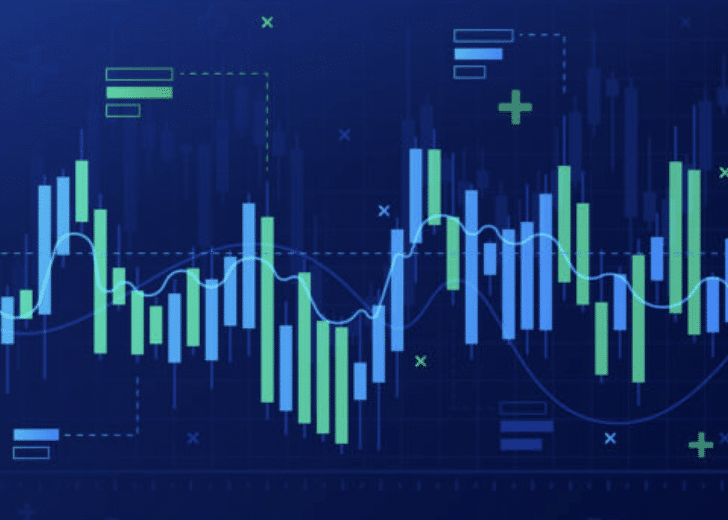The margin account permits traders to utilize more money to expand the financial leverage. Buying on margin incorporates lending money from a broker to buy crypto. Although more potential risks than traditional trading, margin trading provides colossal profit opportunities.
However, buying crypto on margin boosts the impact of loss. Also, the broker can issue a margin call that demands to liquidate the crypto; otherwise, you have to put more capital into keeping the investment.
The following section will see a margin trading guide that includes exact buying and selling trading methods.
What is margin trading in cryptocurrency?
Margin is the indemnity traders’ deposit to the broker as coverage for the potential credit risk. If a trader buys crypto lending cash from the broker, that amount may develop credit risk.
When a trader buys crypto by lending the money from a broker, purchasing on margin takes place. Purchasing on margin means the deposit made with a broker account for the crypto, then the trader utilizes the marginable asset in the broker’s account as indemnity.
However, the general business margin is the difference between the selling price and production cost of a service or product.
How to identify margin?
Imagine a trader has $20,000 in the margin account and is willing to buy the crypto that requires more than $20,000. According to the Federal Reserve, traders must put a minimum of 50% of the initial margin, which implies traders must have half the amount of cash in their margin account for purchasing crypto. It may efficiently double the purchasing power of the trader, meaning allowing traders to buy approximately $40,000.
However, the trader owns crypto worth $40,000 from that $20,000 is the broker’s money. Here the collateral against the loan is the value of the crypto. In case the value of the crypto gets incremented to $50,000. Afterward, the trader may sell it, keeping the rest of the amount after paying the broker’s money with interest. Then the remaining profit is $30,000 with a 50% gain over the primary investment of $20,000. In this case, the trader never paid the total $40,000; if he paid the whole $40,000 on his own then sold the crypto at $50,000, the gain would have 25% only. Hence, it is evident that the leverage provides the buying power on margin and increases the volume of profit gain.
Furthermore, leverage works in the same expanding process in terms of losses. It might avoid further losses, but it has to bear the loss that already took place. In any case, the crypto price decreases to $30,000, and the trader sells it.
After selling, the crypto trader will pay the $20,000 to the broker, and the rest of the amount will be considered the trader’s profit. It seems the trader may lose 50% of his real investment in this process. On the other hand, in traditional trading, if the price falls from $40,000 to $30,000, it is only a 25% loss that will be bearable.
Short-term trading strategy
Crypto trading using the margin is very popular among retail traders. As most retail traders do not have that much amount like a big hedge fund, they often use margin to gain more profit. This short-term crypto trading strategy is based on price action as this trading method works best on the crypto market. Moreover, we will look at only M5, M15, and H1 time frames to identify trades.
Bullish trading strategy
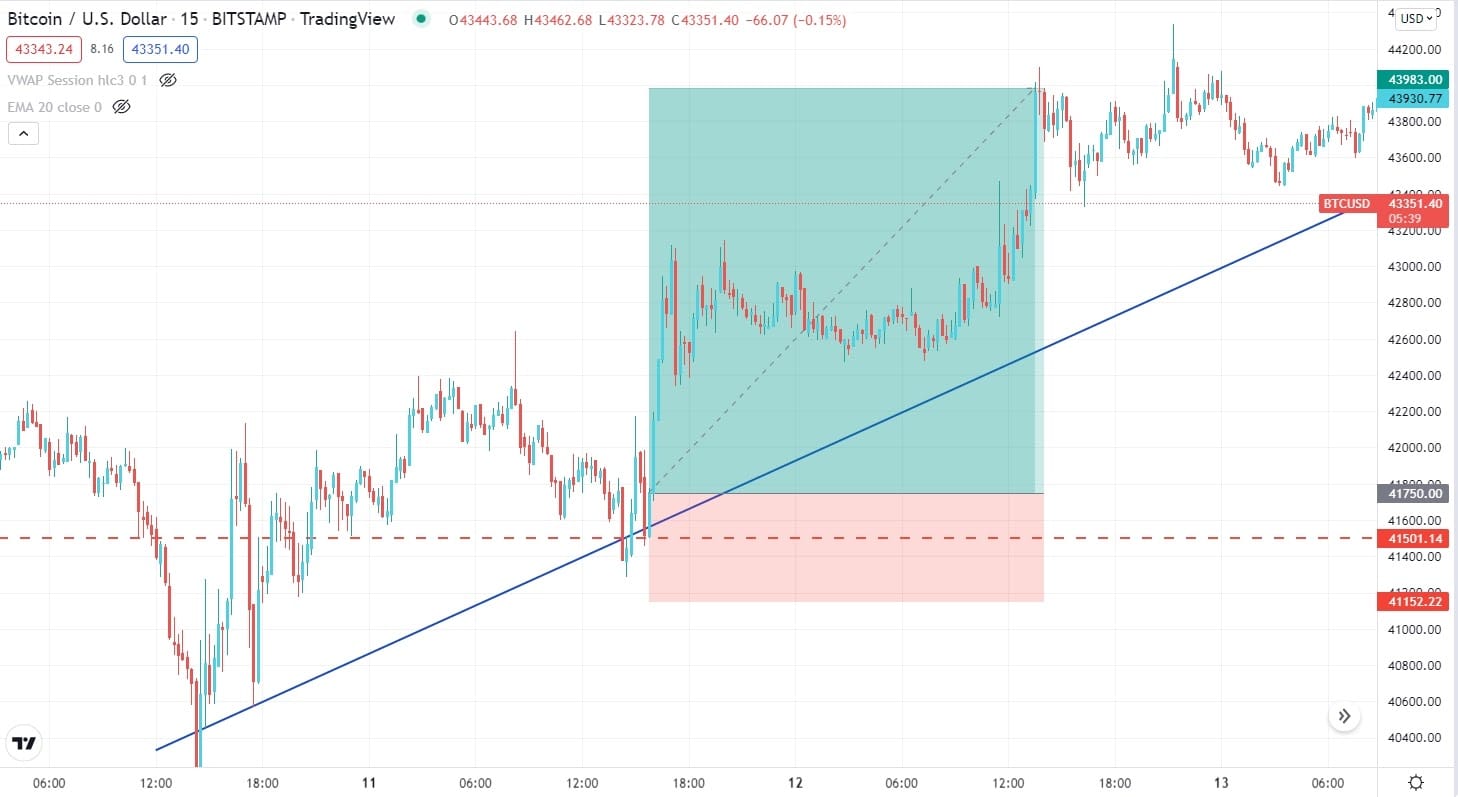
Entry
If you are buying BTC/USD at $41,750 area and you are allowed to use 100:1 leverage, you can open a 1.00 lot trade with the balance of just $417.50 in your accounts.
Stop loss
Put your stop-loss order below the support level with at least a 5-10 pips buffer.
Take profit
Take the profit by calculating at least a 1:3 risk/reward ratio.
Bearish trade setup
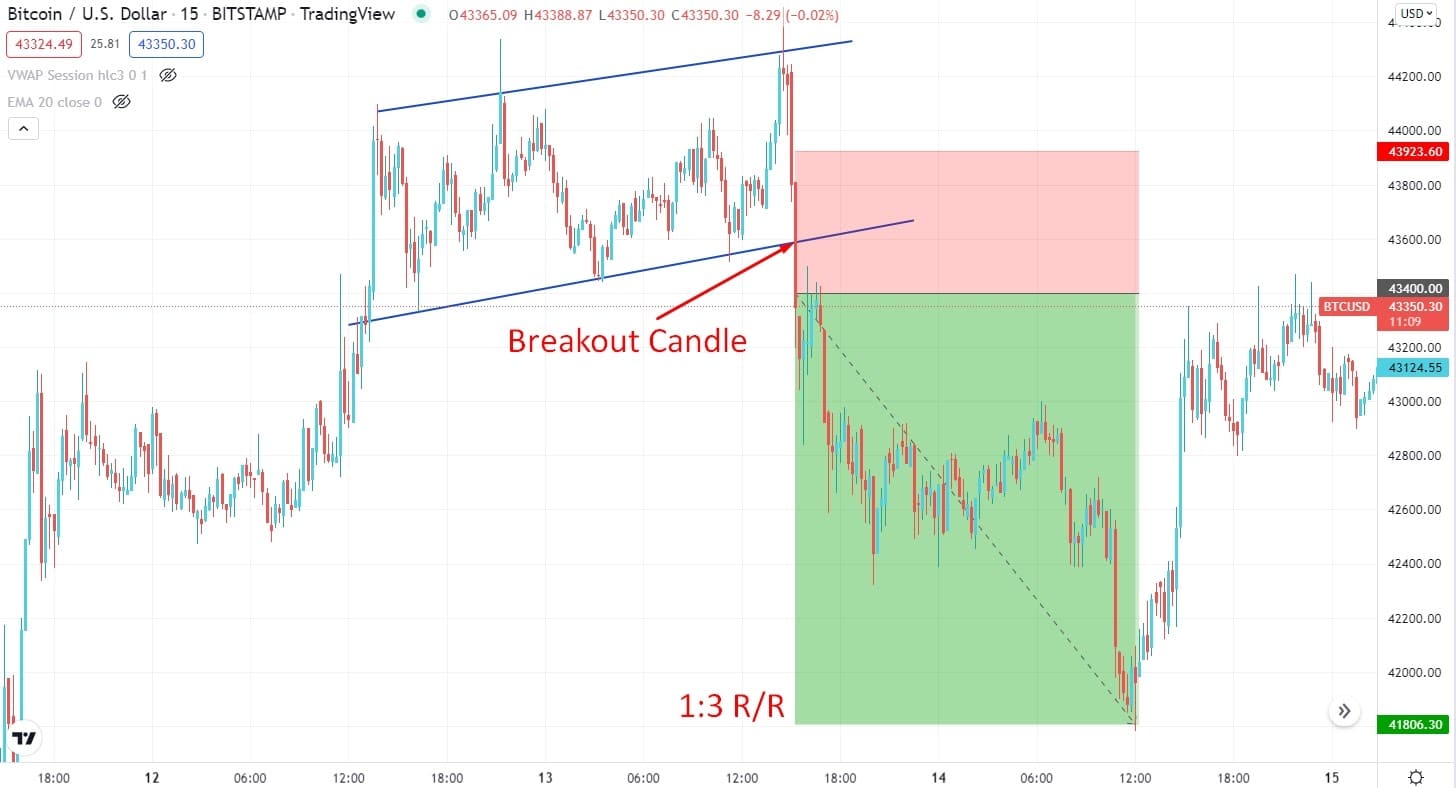
Entry
If you are selling BTC/USD at $43,400 area and you are allowed to use 100:1 leverage, you can open a 1.00 lot trade with the balance of just $434.00 in your accounts.
Stop loss
Put your stop-loss order above the resistance level with at least a 5-10 pips buffer.
Take profit
Take the profit by calculating at least a 1:3 risk/reward ratio.
Long-term trading strategy
This margin strategy is very beneficial as it allows more profit in the long run. Furthermore, we are also adding the dynamic level of 20 EMA indicator to identify the market trend. Let’s look at H4, D1, and W1 time frames.
Bullish trade strategy
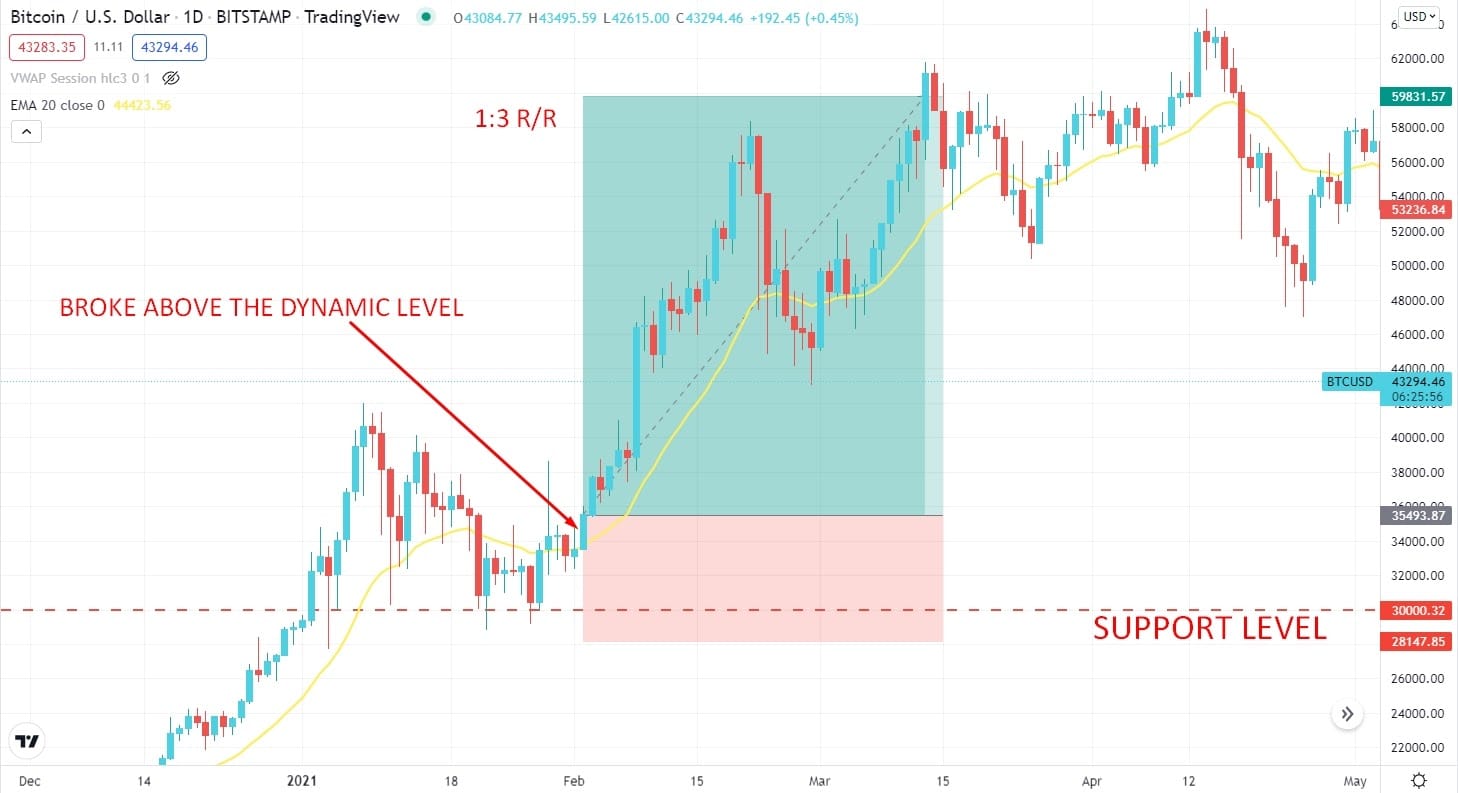
Entry
If you are buying BTC/USD at $35,500 area and you are allowed to use 100:1 leverage, you can open a 1.00 lot trade with the balance of just $355.00 in your accounts.
Stop loss
Put your stop-loss order below the support level with at least a 10-15 pips buffer.
Take profit
Take the profit by calculating at least a 1:3 risk/reward ratio.
Bearish trade setup
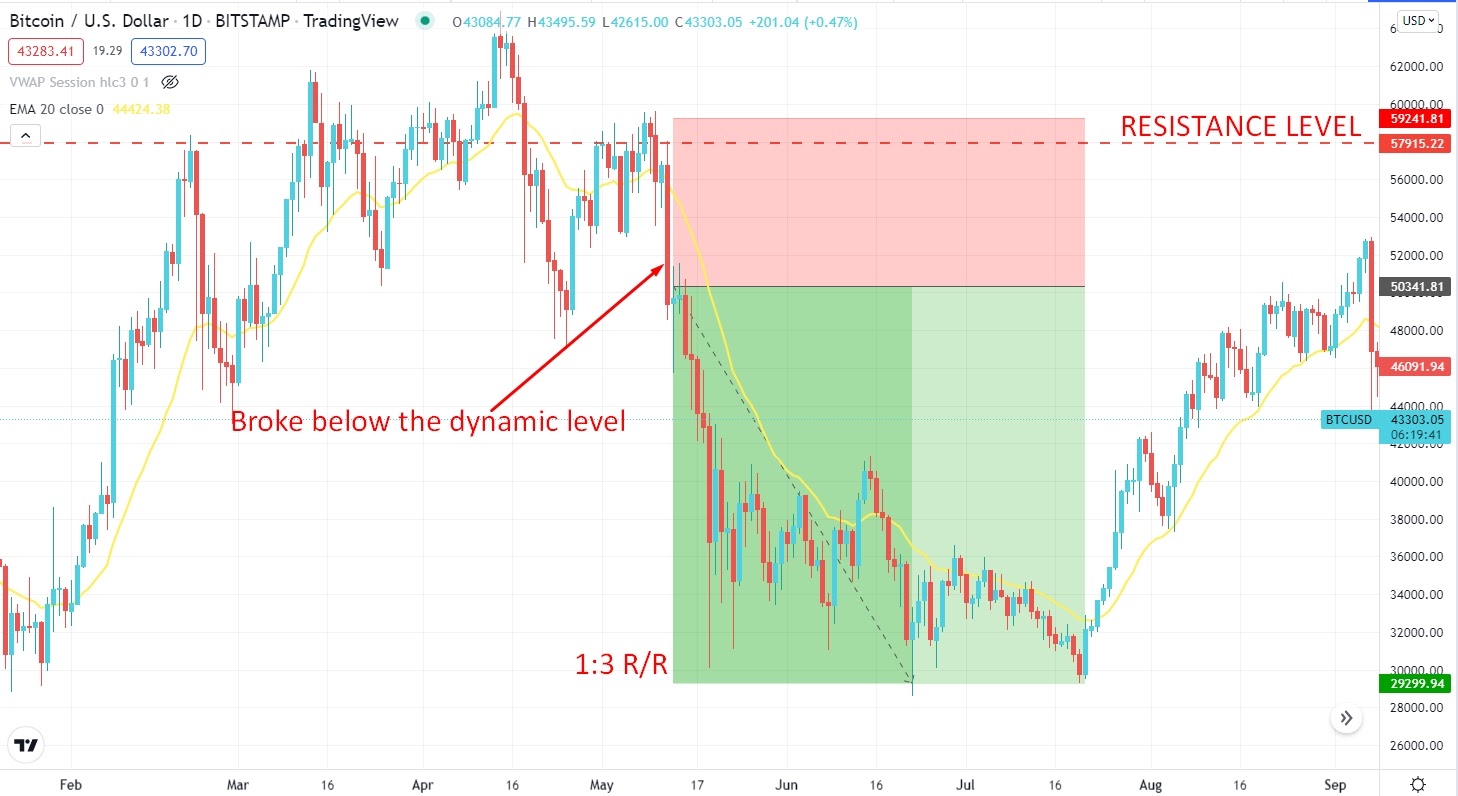
Entry
If you are selling BTC/USD at a $51,400 area and you have allowed using 100:1 leverage, you can open a 1.00 lot trade with the balance of just $514.00 in your accounts.
Stop loss
Put your stop-loss order above the resistance level with at least a 10-15 pips buffer.
Take profit
Take the profit by calculating at least a 1:3 risk/reward ratio.
Pros & cons of the crypto margin trading
| Pros | Cons |
|
|
|
|
|
|
Final thoughts
To conclude, crypto markets are highly volatile, but margin trading is advantageous. Also, retail traders must be cautious of the associated risk. There is a potential that crypto might encounter hardship from the intensified regulation in the future. Even then, presently, crypto margin trading secured the place with excellent scopes for the traders.
